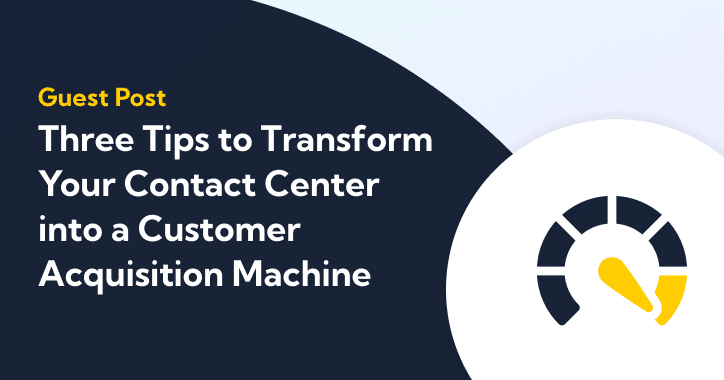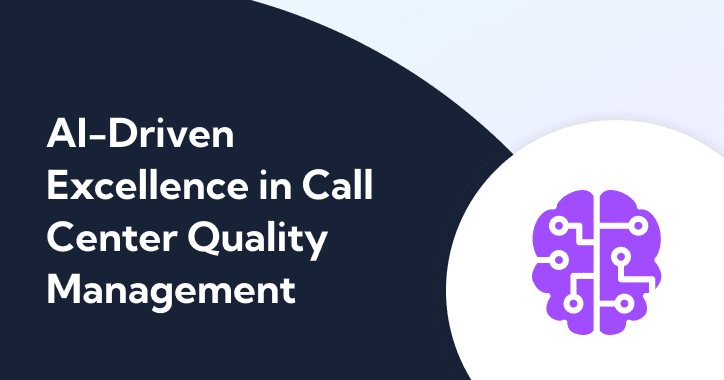“Sorry, I’m busy.” One quick click and a dial tone later, and you’ve lost the call before it even began. Sound familiar? Between “I don’t have time for that,” and, “Call back at a different time,” being busy is one of the most common objections in contact centers. In fact, after analyzing over 140 million calls, our Real-Time Index tells us “busy” was one of the hardest objections to overcome in nearly two-thirds of industries analyzed.
So, if you’re tired of hearing “I’m busy” as an agent, we understand. And if you’re a contact center operator who’s unsure of how to combat such a common objection, we get that, too. Fortunately, there are a few time-tested tactics that can help agents and operators alike overcome the “I’m busy” call center objection. Here are four phone sales strategies you can implement right now to beat busy for good.
Phone Sales Strategies to Combat Endlessly Busy Customers
Okay, let’s call it how it is: It’s pretty unlikely that every customer or lead is actually busy when they try to rush a contact center agent off the phone. Realistically, “I’m busy” is such a popular response among prospects because they know most agents or sales representatives don’t know how to handle it. Agents can’t exactly force an individual to remain on the phone, can they?
Though it’s impossible to keep a prospect on the phone longer than they want to talk, there are methods to combat customers who seem to be endlessly busy. From reflective listening and the AIOA method to establishing a timeline for resolution, here are four phone sales strategies to try.
1. Practice Reflective Listening
Even with a designated call script, it’s common for a customer service agent to become defensive in response to an objection, especially one like “I’m busy.” With win rates as low as 3% on calls that involve a “busy” objection, it’s easy to see why agents react in a defensive manner. But being that 66% of customers expect companies to understand their unique needs, a different approach can be beneficial.
Rather than immediately hopping to the next line in the call flow or interrupting the prospect mid-sentence, take the time to clarify what the prospect is saying with reflective listening. Reflective listening is a communication technique where the listener reflects the speaker’s query back to them, using their own language, to demonstrate they understand what the speaker has said.
If a customer says, “Sorry, I’m too busy,” repeat that concern to confirm you have a mutual understanding, and bookend your response with empathy and action. A response like, “I totally understand you’re too busy. I hear that response a lot from folks in this industry, but after a brief conversation, they were happy they took a few minutes to learn more. Can I have just a few moments of your time?”
2. Leverage the AIOA Method
Similar to reflective listening is AIOA, a four-step process for objection handling in contact centers. Short for Agree, Isolate, Overcome, Ask, the AIOA method teaches agents and sales representatives to approach the sales objection from a place of understanding and curiosity rather than defensiveness. Take a look at how the AIOA would work in a scenario in which the customer claims they’re too busy.
- Agree with your customer that their concern is valid — “I completely understand where you’re coming from.”
- Isolate the concern by asking a clarifying question — “It sounds like your main concern here is that you don’t have the time to chat right now, is that correct?”
- Overcome the objection by posing a new plan of action — “I totally understand if you are very busy right now, we could reschedule this call for tomorrow at 3 p.m.”
- Ask the customer if they’re satisfied by the new plan — “Would that work for you?”
If the answer to the final question is no, or some variation of no, it’s likely that being busy wasn’t the real reason why the customer wanted to end the call. In this case, respond to secondary objections in a similar manner as AIOA to isolate the true concern. For instance, a lead may not have the funds or may not be in your target market, in which case, they could be removed from your call list and sales process.
3. Determine Interest for a Second Call
Nearly half of all agents fail to follow-up after the first call, even though the average customer says “no” four times before finally saying “yes.” While it may not be the easiest way to secure a sale or a conversion, a second call can often ultimately be effective — and drive revenue for the contact center. When customers pull the “I’m busy” card, it’s important to gauge interest for a second call.
Rather than jump to scheduling something new, prepare to explain how your product or service will save them time or money, streamline operations, or enhance their business. Communicate that you’d like to summarize the benefits of your product or service before scheduling a follow-up call, in an effort to save everyone involved some time effectively.
One way to determine interest for a second call is to say something along the lines of, “I totally understand, I know what it’s like to be interrupted in the middle of something important. I’ll tell you what, before I schedule a call back with you, let me take a quick second now to make sure [product or service] is something that’s worth calling you back for. Is that okay?”
4. Establish a Timeline for Resolution
Once you can secure interest in a second call, you’re halfway to converting a lead or prospect into a customer. So, it’s important to never leave that second call open-ended. If a lead says they’re too busy to talk at 10 a.m. on Tuesday, but are interested in a follow-up call, tell them you can call back in 30 minutes or at 11 a.m. on Wednesday. Ask at which hours they are the busiest.
By clarifying a timeline for resolution, you can ensure that you don’t interrupt a prospect in the middle of their work meeting or during other important tasks (moments they’re actually busy!). This allows your prospect control over when the call occurs, but it doesn’t leave as much wiggle room for them to reject your request. To establish a timeline, try something like this:
“No problem at all! I’d hate to interrupt your workflow. I can either call you back in 30 minutes or schedule a brief call tomorrow at 11 a.m. Which works best for you?”
How Real-Time Guidance Can Help Overcome Common Objections
In industries like retail and sales, “busy” was the hardest objection to overcome. Present in 25% of all calls and responsible for a measly 3% win rate, it’s no wonder why agents and operators struggle with this common excuse. Now, you don’t have to do call center coaching alone. Balto’s Real-Time Guidance tool can help agents overcome objections like “I’m busy” instantly as they occur.
Powered by advanced natural language processing (NLP) technology, Balto recognizes intent-based language to pick up any variation of “I’m busy” in the call dialogue and prompts agents with the best answers to say the right thing, at the right time. Winning techniques can then be scaled to the rest of agents with the press of a button to help other team members nip similar common sales objections in the bud.
Real-Time Guidance addresses the problem of excessive “busy” objections while they’re happening, to give agents the confidence they need to navigate pivotal moments with tried and true flows of conversation. Such techniques can even be added into your call flow earlier into conversations to save agents time and deliver exceptional customer service. Schedule a demo today to learn how to overcome common objections with ease.
Agent Performance, Unleashed
Unite agents with AI for conversations that deliver results. Empower your team using real-time guidance with Balto.






